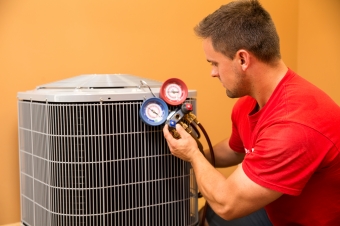Have you decided to make the switch a heat pump? Many people are making the switch, for a variety of different reasons. For one, heat pumps are less expensive to operate. They requires less energy for heating and cooling, so your electric bill and gas bill will go down – often significantly. The cost of maintaining a heat pump is also less expensive than the cost of maintaining central heating and cooling systems. Heat pumps are single units while the central systems each have separate units – clearly, the cost of maintaining one unit is lower than the cost of maintaining two. Last but not least, some people are making the switch to heat pumps because their impact on the environment is much less than a traditional central heating and cooling system. Because they use less energy, their carbon footprint is much lower.
So, you’ve decided that a heat pump is right for you. Now all you have to do is choose one. This is easier said than done. Many companies have capitalized on the increased popularity of heat pumps and have developed their own models, so the market is saturated with different pumps. Size is one consideration – you need a heat pump that will be able to provide adequate amounts of heat and cooling to all of the rooms in your home. Usually, it is worth calling out a contractor for advice on choosing the correct size of heat pump.
Size is only one consideration, however. You need an efficient heat pump that is right for the climate you live in. That is where SEER and HSPF enter the picture.
First, consider SEER. This stands for Seasonal Energy Efficiency Rating. The SEER number lets you know how energy efficient the heat pump is at cooling your home. By law, a heat pump has to have a SEER rating of at least 13, but the rating scale goes as high as 21. The higher the number, the more efficient the cooling provided by the system.
HSPF is the Heating Seasonal Performance Factor, and it of course refers to the efficiency of the heating of the pump. HSPF ratings are required to be at least 7.7 but can go up to 10.
What do these numbers mean to you? You can use these ratings to choose a heat pump designed to meet your needs. High SEER ratings mean that the heat pump cools air efficiently, so if you live in a hot climate, a high SEER number is important. On the other hand, high HSPF ratings indicate effective heating and are ideal for cold climates.
Let HSPF ratings and SEER ratings help you choose a heat pump that will give you the kind of temperature control you want over your home.






